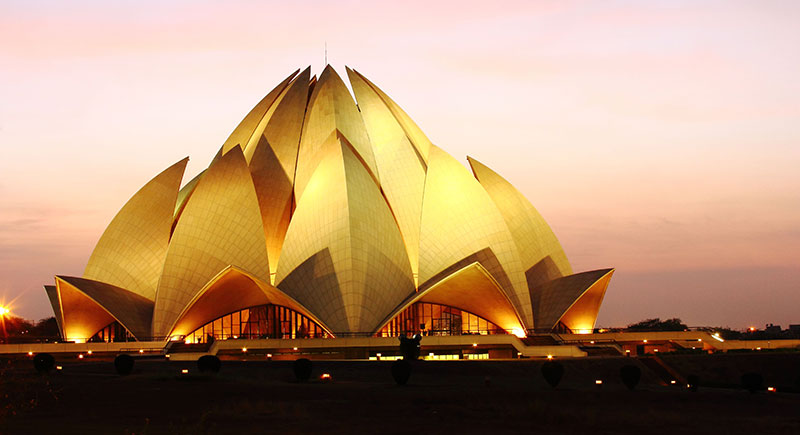The Lotus Temple in Delhi is an architectural and spiritual marvel, ranking among the top tourist destinations in the city and worldwide.
Over 10,000 people visit the temple daily, making it over 4 million people yearly. Its structure is like that of a giant lotus (hence the name) made of marble. It owns a pure white that energies like a dream when the sun spreads its magic over the city.
A Little Peek into the History of the Lotus Temple :
How it Came Along?
Who Built the Lotus Temple?
The Bahai Faith that the Lotus Temple Represents
The Lotus Temple, also known as the Bahai Temple, stands for architectural excellence and the tenets of the Bahai religion. This faith propagates the equality and unity of all religions, stating that only one god blesses this entire universe.
It is said that the Bahá’í faith originated in Iran, founded by the religious prophet Bahá’u’lláh.
What else is there for You ?
Besides admiring this gorgeous place’s architectural beauty and excellent symmetry, you can also indulge in spiritual sessions. Either join the regular prayer sessions here or immerse yourself in some ancient Bahai scriptures to learn more about this peaceful religion. The Lotus Temple features an audio-visual room and a library housing religious books for visitors. You can set these scriptures to choir tunes and become an integral part of the spirituality of the Bahá’í faith. However, playing any musical instrument inside the temple is prohibited.
Architecture is What Makes It Special!
Lotus Temple At Night

Saving the best for last, let’s delve into the architectural marvel of the Lotus Temple. What makes this design so unique? While the lotus design is striking, how it has been crafted to reflect the Bahá’í faith is imposing. The Bahá’í faith requires a place of worship to have a circular structure with nine sides, which has no direct connection to a lotus flower. However, by blending this requirement with the Indian symbol of the lotus, architect Fariborz Sahba brought this vision to life and set the project in motion.
Tidbits to Remember
Place
Lotus Temple Timings

Opening Time Closing Time
Summers 9:00 AM 7:00 PM
Winters 9:30 AM 5:30 PM
Open
Tuesday – Sunday
Closed
Monday
Entry and Parking
Free
Lotus Temple closest Metro Station
Kalkaji Mandir (Violet Line)
Delhi is home to numerous architectural masterpieces, and the Lotus Temple is only one among many! Akshardham Temple is another such marvel that one cannot miss if they’re in Delhi.


















